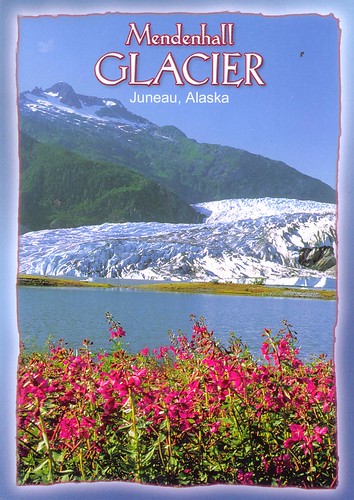
Summer scenic view of Menmdenhall Glacier with fireweed, Juneau Alaska.
Mendenhall Glacier is a glacier about 12 miles (19 km) long located in Mendenhall Valley, about 12 miles (19 km) from downtown Juneau in the southeast area of the U.S. state of Alaska.
Originally known as Sitaantaagu ("the Glacier Behind the Town") or Aak'wtaaksit ("the Glacier Behind the Little Lake") by the Tlingits, the glacier was named Auke (Auk) Glacier by naturalist John Muir for the Tlingit Auk Kwaan (or Aak'w Kwaan) band 1888. In 1899 it was renamed in honor of Thomas Corwin Mendenhall. It extends from the Juneau Icefield, its source, to Mendenhall Lake and ultimately the Mendenhall River.
The Juneau Icefield Research Program has monitored the outlet glaciers of the Juneau Icefield since 1942 , including Mendenhall Glacier. From 1951–1958 the terminus of the glacier, which flows into suburban Juneau, has retreated 1,900 feet (580 m). The glacier has also receded 1.75 miles (2.82 km) since 1958, when Mendenhall Lake was created, and over 2.5 miles (4.0 km) since 1500. The end of the glacier currently has limited crevasse a negative glacier mass balance and will continue to retreat in the foreseeable future.
Given that average yearly temperatures are currently increasing, and the outlook is for this trend to continue, it is actually possible that the glacier might experience a period of stabilization or slight advance during its retreating march. This is because increasing amounts of warm, moist air will be carried up to the head of the icefield, where colder ambient temperatures will cause it to precipitate as snow. The increased amount of snow will feed the icefield, possibly enough to offset the continually increasing melting experienced at the glacier's terminus. However, this interesting phenomenon will fade away if temperatures continue to climb, since the head of the glacier will no longer have cold enough ambient temperatures to cause snow to precipitate.

No comments:
Post a Comment